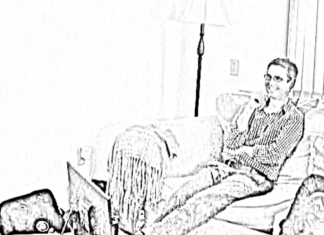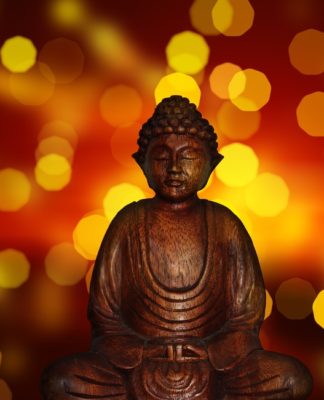Anxiety is a tricky emotion. It is a fearful response to an imagined situation, a self-imposed deadline, or a hoped-for outcome that is not coming to fruition as quickly as planned. Or it is a response to a perceived threat that may or may not manifest. Anxiety is self-induced; (wo)man-made. All these scenarios have one thing in common: it’s our mind versus our actual situation.
If anxiety is an emotional response to a perceived lack or expectation of things being different than they actually are, then the answer should be simple, right?
Accept things exactly as they are.
If we slow down enough to actually be with what is then anxiety dissolves — because there is no pressure to be in the present moment as such. Pressure creates anxiety. Pressure is the rush to be somewhere else, rather than where we are. You can do all these things to alleviate physical symptoms of anxiety: take herbs or drugs, do yoga, go for a run, learn mindfulness techniques, or talk to a friend. But unless you target the root cause, which is in the mind, anxiety will recur and keep coming back until you address the foundation. The core of the issue is a fundamental discomfort with your perceived relationship to the world.
Cutting Anxiety At the Root Writing Exercise:
1. Take a few sheets of blank paper and a pen, and go to a quiet place where you will not be be disturbed for at least half an hour.
2. Write down everything that is bothering you and causing disturbance. Don’t edit, don’t monitor what you are writing in any way. Whine, complain, bitch and moan if you need to. Spend 10 minutes on this without stopping or lifting your pen.
3. Now, on a new sheet of paper, do another free write, but this time, focus only on what is physically tangible in your experience. Notice the sounds, sights and smells in your environment. Describe the physical sensations present in the body. Note how your breath is flowing (or not). Pay attention to any insights you might have while you are grounded in the realm of physical sensations.
4. Compare the 2 writing samples and see which one feels more true. Notice if you feel any different after doing the exercise, and write down any observations.
The point is to experience directly how anxiety is caused by thinking. When we allow ourselves to be totally present and to experience the present moment, our thinking mind is temporarily disabled. Watching a sunset, playing with a pet, taking a walk in the woods, listening to a piece of gorgeous music…all these activities allow us to focus on feeling the immediate experience.
Being present is the key to cutting anxiety at the root. It’s just a matter of developing the habit. So cutting anxiety is essentially about learning what gets in your way of experiencing what is happening right now. The present moment is always available. It is simply a matter of getting out of your own way. The solution is to accept things as they are right here and right now.
Visit www.kimroberts.co for more articles. I also love to paint. You can see some of my work at: KimRobertsArt.com


 With over 25 years of experience as a wellness professional, I counsel and coach, teach yoga techniques, and help people develop a relationship to sitting meditation. I’ve founded yoga programs in numerous situations around the world, and advise clients on practices to incorporate successful programs into existing hospitality venues.
I began practicing Ashtanga yoga with Richard Freeman in 1992 and spent 10 years studying intensively and eventually teaching with him in Boulder, Colorado. After spending a year studying with Sri Pattabhi Jois in Mysore, South India, I was authorized to teach Ashtanga yoga. I currently offer individual counseling and coaching sessions that will take into account your current situation and where you want to be. The work includes traditional therapeutic techniques, but without the burden of dredging up historical details. Contemplative psychotherapy is a model that works in the moment, identifying the present circumstances and emotions in order to fully embody whatever change wants to take place. Only by staying fully present and embodied can we move cleanly (in other words, without baggage) from one experience to another.
With over 25 years of experience as a wellness professional, I counsel and coach, teach yoga techniques, and help people develop a relationship to sitting meditation. I’ve founded yoga programs in numerous situations around the world, and advise clients on practices to incorporate successful programs into existing hospitality venues.
I began practicing Ashtanga yoga with Richard Freeman in 1992 and spent 10 years studying intensively and eventually teaching with him in Boulder, Colorado. After spending a year studying with Sri Pattabhi Jois in Mysore, South India, I was authorized to teach Ashtanga yoga. I currently offer individual counseling and coaching sessions that will take into account your current situation and where you want to be. The work includes traditional therapeutic techniques, but without the burden of dredging up historical details. Contemplative psychotherapy is a model that works in the moment, identifying the present circumstances and emotions in order to fully embody whatever change wants to take place. Only by staying fully present and embodied can we move cleanly (in other words, without baggage) from one experience to another.





















